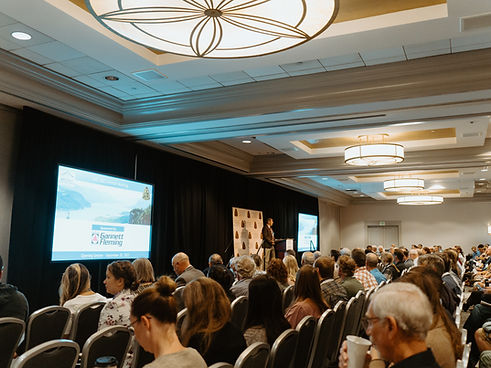



Technical Program Schedule
Program with Abstracts
MONDAY, SEPTEMBER 22 & TUESDAY, SEPTEMBER 23
Virtual Day - 10:00am-4:30pm (Eastern) on Monday and 10:00am - 2:00pm (Eastern) on Tuesday
WEDNESDAY, SEPTEMBER 24 – MORNING OPENING SESSION
Moderator: AEG President Renee Wawczak
Time: 8:00am-12:00pm
-
Welcome: Renee Wawczak and Sarah Kalika
-
AEG Volunteer Recognition Award: Bill Roman and Martha Whitney
-
AEG Advocacy Award: Kenneth Tramm
-
IAEG Honorary President Award - Presented by Vassillis Marinos
-
AEG Foundation Awards
-
Keynote Speakers: Dr. Timothy Stark, U. of Illinois at Urbana-Champaign and Dr. Thomas Oommen, Department of Geology and Geological Engineering, University of Mississippi
-
AEG Outstanding Environmental & Engineering Geologic Project Award: “The Tunnel and Reservoir Plan (TARP) - Kevin Fitzpatrick, MWRD of Greater Chicago
-
2024-2025 Jahns Lecturer: Dr. John Kemeny
-
Introduction of 2025-2026 Jahns Lecturer: Dr. Christopher Stohr
WEDNESDAY, SEPTEMBER 24 – AFTERNOON
-
Poster Presentations - 8:00am-4:00pm
-
Technical Session #1: [Redacted] — A Symposium
-
Technical Session #2: Tunneling Symposium
-
Technical Session #3A: Current Status of Geology Programs at Universities
-
Technical Session #3B: Vapor Intrusion
THURSDAY, SEPTEMBER 25 – MORNING
-
Poster Presentations - 8:00am-4:00pm
-
Technical Session #4: GASH Symposium - Advances in Studies of Intraplate Tectonics
-
Technical Session #5: Dams and Levees Symposium
-
Technical Session #6: Land Subsidence Symposium
THURSDAY, SEPTEMBER 25 – AFTERNOON
-
Technical Session #7: Geologic and Seismic Hazards Part I
-
Technical Session #8: Environmental Symposium
-
Technical Session #9A: NOA
-
Technical Session #9B: Climate Change Deformation Impacts on Infrastructure and the Built Environment (In partnership with SEG)
FRIDAY, SEPTEMBER 26 – MORNING
-
Technical Session #10: Landslides
-
Technical Session #11: Subsurface Urban Heat Islands / Geological Energy Harvesting and Storage Symposium
FRIDAY, SEPTEMBER 26 – AFTERNOON
-
Technical Session #12: Geologic and Seismic Hazards Part II
-
Technical Session #13: AI / Machine Learning
-
Technical Session #14: Site Characterization

2025 Virtual Day Expanded to Two Days
Monday, September 22, 2025 - 10:00am-4:30pm (Eastern)
Tuesday, September 23, 2025 - 10:00am-2:30pm
$100 members/$150 non-members
$20 Students (email heather@aegweb.org for discount code)
Registration for this event will be included with all Annual Meeting full and student registrations.
Join us for AEG's Annual Meeting Virtual Days. This will be two online only days of technical presentations for those that would like to participate in the Annual Meeting but are unable to attend. All presentations will be recorded for later viewing. 9.5 PDHs will be available for these sessions.
We are excited to announce that the AEG GASH Technical Working Group is hosting a second virtual day on Tuesday, September 23 from 10am-2:30pm Eastern Time. There is no additional cost for this extra day. This is the same group that convened the outstanding Virtual Volcanic Hazards Symposium earlier this month.
Supplementary Virtual Presentations on Advances in Studies of Intraplate Tectonics
Symposium Convenor: Gerry L. Stirewalt, PhD, PG, CEG
This exciting virtual 4-hour session, planned and convened by Dr. Gerry L. Stirewalt, Co-Chair of AEG’s Geologic and Seismic Hazards Technical Working Group (GASH TWG), showcases four (4) speakers with information to share that expands the number of intraplate tectonic sources being discussed during the in-person 25 September Symposium on “Advances in Studies of Intraplate Tectonics”. This virtual session, organized to allow inclusion of these sterling speakers who were unable to attend the Annual Meeting but have fascinating data to present that is sure to be of keen interest to attendees, specifically includes the following topics:
-
Geology of the Reelfoot Rift and It’s Earthquakes Beneath the Mississippi River Valley - Roy Van Arsdale, University of Memphis
-
Methods for Studying Earthquake Hazards in the New Madrid Seismic Zone in West Tennessee - Valerie J. Harrison, Tennessee Geological Survey
-
Looking High and Low for Active Intraplate Faults in the Charleston Seismic Zone in South Carolina by Combining Geophysical Datasets - Anjana K. Shah, U.S. Geological Survey
-
The Mw 5.1 Sparta, North Carolina, Surface Rupturing Earthquake and Evidence for Recurrent Quaternary Deformation - Paula M. Figueiredo, North Carolina State University and Institute Dom Luis, Lisbon, Portugal
This virtual session provides attendees with the opportunity to learn more about how data emerging from investigations conducted in the specified intraplate tectonic areas are enhancing understanding of intraplate geologic hazards from faulting and associated seismicity. Your enthusiastic convenor, G. Stirewalt, believes this opportunity to listen, learn, and exchange ideas with these four expert geoscientists is absolutely too good to miss! DON’T MISS THIS GREAT SUPPLEMENTARY VIRTUAL SESSION!
Speaker Information
Speaker Slides
Speaker Webinar

Moderator Information
Moderator Slides
Moderator Webinar


